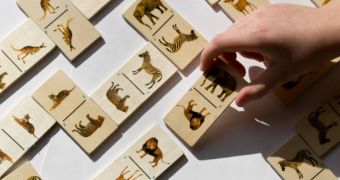With the growing threat of global warming and climate change looming ahead, biologists are beginning to plan for the future. A debate is currently raging in the international community as to which way of protecting endangered species and conserving biodiversity is the best. While some believe that local programs applied on the animals' original ecosystems are in order, others say that a better solution would be to relocate some species to less threatened areas, a process they termed “assisted migration.”
“Moving things around is not that new. The new reason to talk about it is the climate change angle. The timescale of climate change and the amount of climate change we're talking about means that we're going to have to move quickly from science to practice,” University of Notre Dame in South Bend Assistant Professor of Biological Sciences Jessica Hellmann says. She is also a member of the group that met during the Ecological Society of America conference, last week, in Albuquerque, New Mexico, to discuss the best possible scenarios under the circumstances.
One of the best examples of species threatened by global warming is the chinchilla-like American pika, a flower-gathering herbivore that lives in the western parts of North America. Biologists consider it a clear indicator of global warming, as the animal cannot withstand heat. If a pika is exposed to temperatures above 23°C (75°F), death occurs within an hour. In a 2003 Journal of Mammology entry, experts showed that nine out of 25 known populations had gone extinct. Such a large reduction in numbers could have only been caused by global warming, experts say.
A 2004 paper, published in the renowned journal Nature, shows that about one million species worldwide are in similar situations, and could go extinct within the next five decades. Ecologist Alison Cameron, from the Max Planck Institute of Ornithology, in Munich, Germany, says that these estimates are based on the best case scenario, if statisticians consider the lowest estimates possible. The actual number of lost species could be far greater than that. Around the world, animal species accustomed to certain temperatures have been observed to move further upwards, in order to survive.
“It's politically complicated, socially complicated, scientifically complicated, ethically complicated,” US Fish and Wildlife Service science adviser Daniel Ashe adds, speaking of the challenges that lie ahead in biologists' efforts to relocate species. These come in addition to logistical efforts of constructing Noah's Ark-like ships to transport animals from one continent to the other and so on, LiveScience reports.
“We can say here's where a species lives now, here's where we expect that climate to be in the future, but there are lots of other things besides climate that are important. There's a whole slew of basic science that needs to be done before we can fully understand whether to a species would be just fine where it is or that it needs to be moved,” ecologist Dov Sax, from the Brown University in Providence, who is also a group member, shares.

 14 DAY TRIAL //
14 DAY TRIAL //